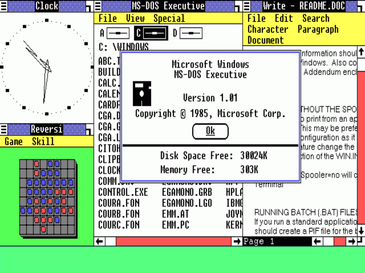In today’s digital age, collaboration is key. Whether you’re working on a group project, sharing ideas with colleagues, or co-authoring documents, the ability to edit text together in real-time is essential. While there are many specialized collaboration tools available, you might be surprised to learn that Notepad, the humble text editor that’s been a part of the Windows operating system for decades, can also be used for collaborative text editing. In this blog post, we’ll explore how to use Notepad for sharing and reviewing content with others.
Introduction
Notepad is a lightweight text editor that has been a part of the Windows operating system for as long as most of us can remember. It’s a simple, no-frills tool that’s perfect for jotting down quick notes, writing code, or editing configuration files. However, what many people don’t realize is that with a few additional tools and techniques, Notepad can be turned into a collaborative text editing platform.
In a world where remote work and online collaboration are more prevalent than ever, knowing how to use Notepad for sharing and reviewing content can be a valuable skill. Let’s dive into the details of how you can transform this basic text editor into a powerful tool for collaboration.
Getting Started with Notepad Collaboration
Before we get into the nitty-gritty of collaborative text editing with Notepad, there are a few prerequisites you need to have in place:
Windows Operating System: Notepad is a native Windows application, so you’ll need a Windows-based computer to use it.
Internet Connection: Since collaborative editing involves sharing content over the internet, a stable internet connection is a must.
Notepad++: While the built-in Notepad app is limited in terms of collaborative features, you can enhance its functionality by using Notepad++. Notepad++ is a popular open-source text editor that offers advanced features, and it’s free to download and use.
Cloud Storage Service: To effectively share and collaborate on documents, you’ll need a cloud storage service like Microsoft OneDrive, Google Drive, or Dropbox.
Once you have these basics in place, you’re ready to begin your collaborative text editing journey with Notepad.
Collaborative Features of Notepad and Notepad++
Notepad itself doesn’t have built-in collaborative features like some specialized tools do. However, when you combine Notepad with Notepad++, you gain access to several key features that make collaboration possible:
Real-Time Editing: Notepad++ supports real-time collaboration, allowing multiple users to edit a document simultaneously. This feature is handy when working on documents with others, as you can see changes as they happen.
Syntax Highlighting: Notepad++ provides syntax highlighting for various programming languages, making it an excellent choice for co-authoring code.
Document Versioning: With cloud storage services like OneDrive or Google Drive, you can easily manage different versions of your document. This feature is especially useful when reviewing changes and tracking the document’s history.
Commenting and Annotations: Notepad++ enables users to leave comments and annotations on the document. This is crucial for providing feedback and discussing changes with collaborators.
Offline Editing: If you need to work on documents offline, Notepad++ supports local file editing. You can later sync your changes when you reconnect to the internet.
Setting Up Notepad and Notepad++ for Collaboration
Now, let’s walk through the steps to set up Notepad and Notepad++ for collaboration:
Install Notepad++: If you don’t already have Notepad++ installed on your computer, download it from the official website and follow the installation instructions.
Connect to a Cloud Storage Service: Choose your preferred cloud storage service and create an account if you don’t have one. Install the desktop client for seamless integration with your operating system.
Create a Shared Folder: Within your cloud storage service, create a dedicated folder for your collaborative documents. Share this folder with your collaborators, giving them the appropriate permissions.
Open a Document with Notepad++: Locate the document you want to collaborate on within your shared folder. Right-click on the file and select “Open with Notepad++.”
Collaborate in Real-Time: Now that your document is open in Notepad++, you can invite collaborators to edit it in real-time. Share the document’s link with them, and they can access it through their own Notepad++ instances.
Tips for Effective Collaboration with Notepad and Notepad++
Collaborative text editing with Notepad and Notepad++ can be a smooth experience with the right approach. Here are some tips to ensure effective collaboration:
Clear Communication: Establish clear communication channels with your collaborators. Use instant messaging or video conferencing tools to discuss changes and provide feedback in real-time.
Version Control: Make good use of your cloud storage service’s version control features. This ensures that you can always revert to previous versions if needed.
Document Naming Conventions: Develop a standardized naming convention for your documents. This makes it easier to identify and organize files, especially when collaborating on multiple projects.
Use Comments Wisely: Notepad++ allows you to leave comments and annotations within the document. Use this feature to provide context for changes and discuss edits with collaborators.
Backup Your Work: Regularly save and back up your work, both locally and on the cloud. Technical glitches can happen, and having backups ensures you don’t lose valuable content.
Conclusion
Notepad and Notepad++ might not be the first tools that come to mind for collaborative text editing, but they can be surprisingly effective when combined with cloud storage services. Whether you’re working on a coding project with a colleague, co-authoring a report, or simply making grocery lists with family members, Notepad’s simplicity and the added functionality of Notepad++ can enhance your collaborative experience.
In a world where effective communication and collaboration are vital, it’s important to remember that sometimes, the most basic tools can offer the most practical solutions. Give Notepad and Notepad++ a try for your next collaborative project, and you might be pleasantly surprised by the results.
Remember, technology doesn’t have to be complex to be effective, and in the case of Notepad, simplicity can be a strength. So, the next time you need to collaborate on text-based content, consider going old-school with Notepad and Notepad++. You might find that they meet your needs just perfectly.
With the right setup and a dash of creativity, you can turn these unassuming text editors into powerful tools for collaborative content creation. So, give it a try and see how Notepad and Notepad++ can transform your collaborative work.
Happy collaborating!



